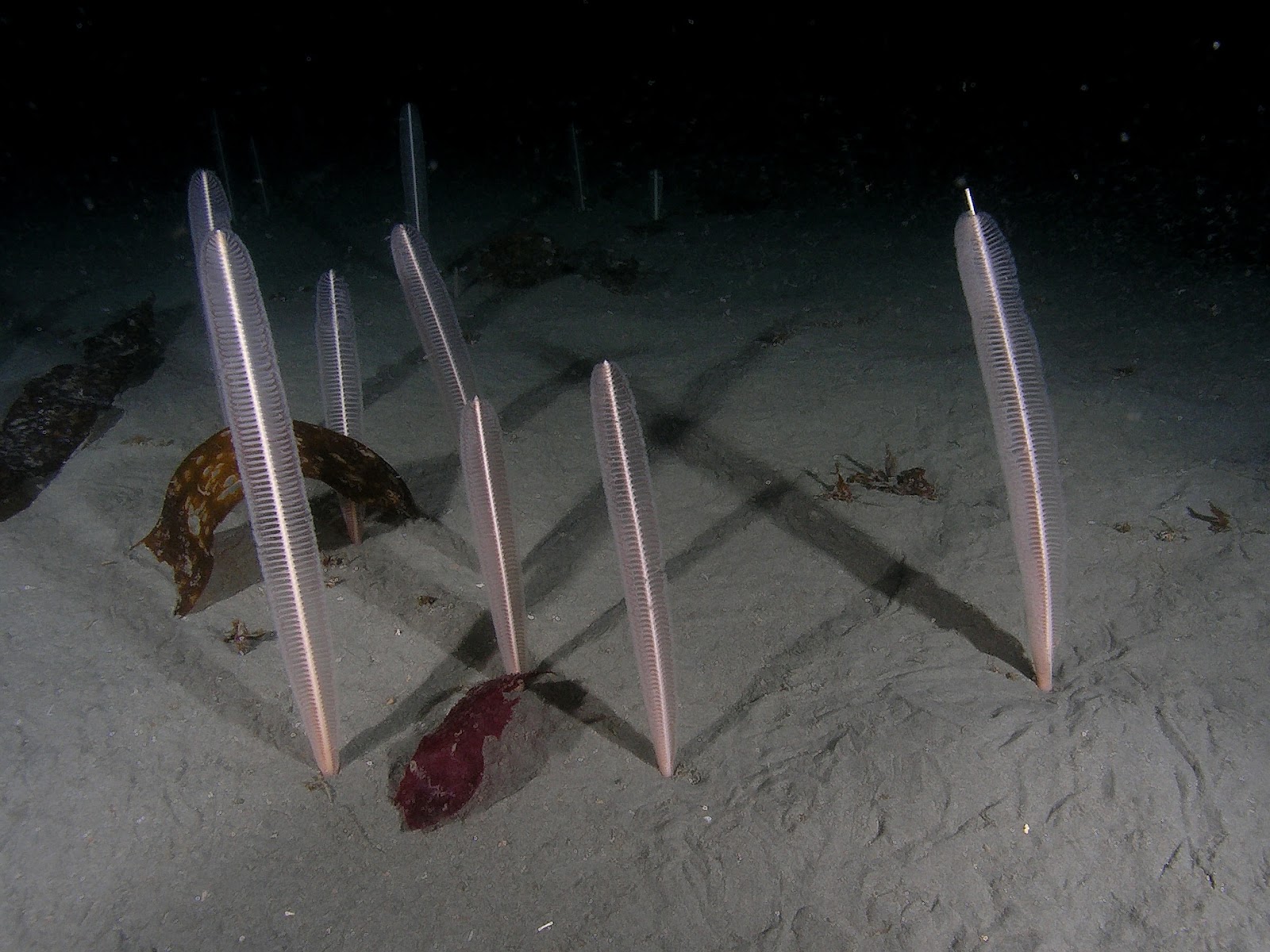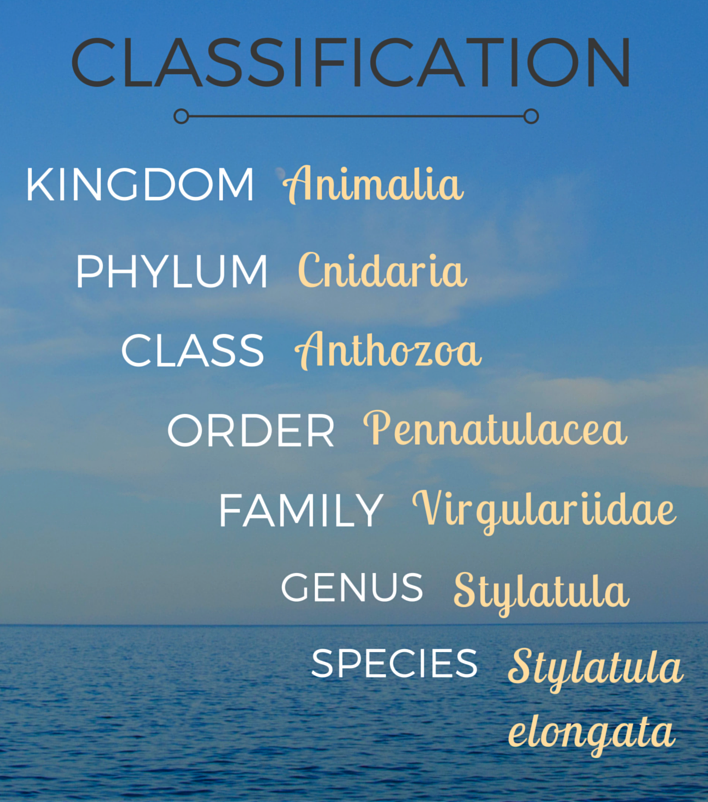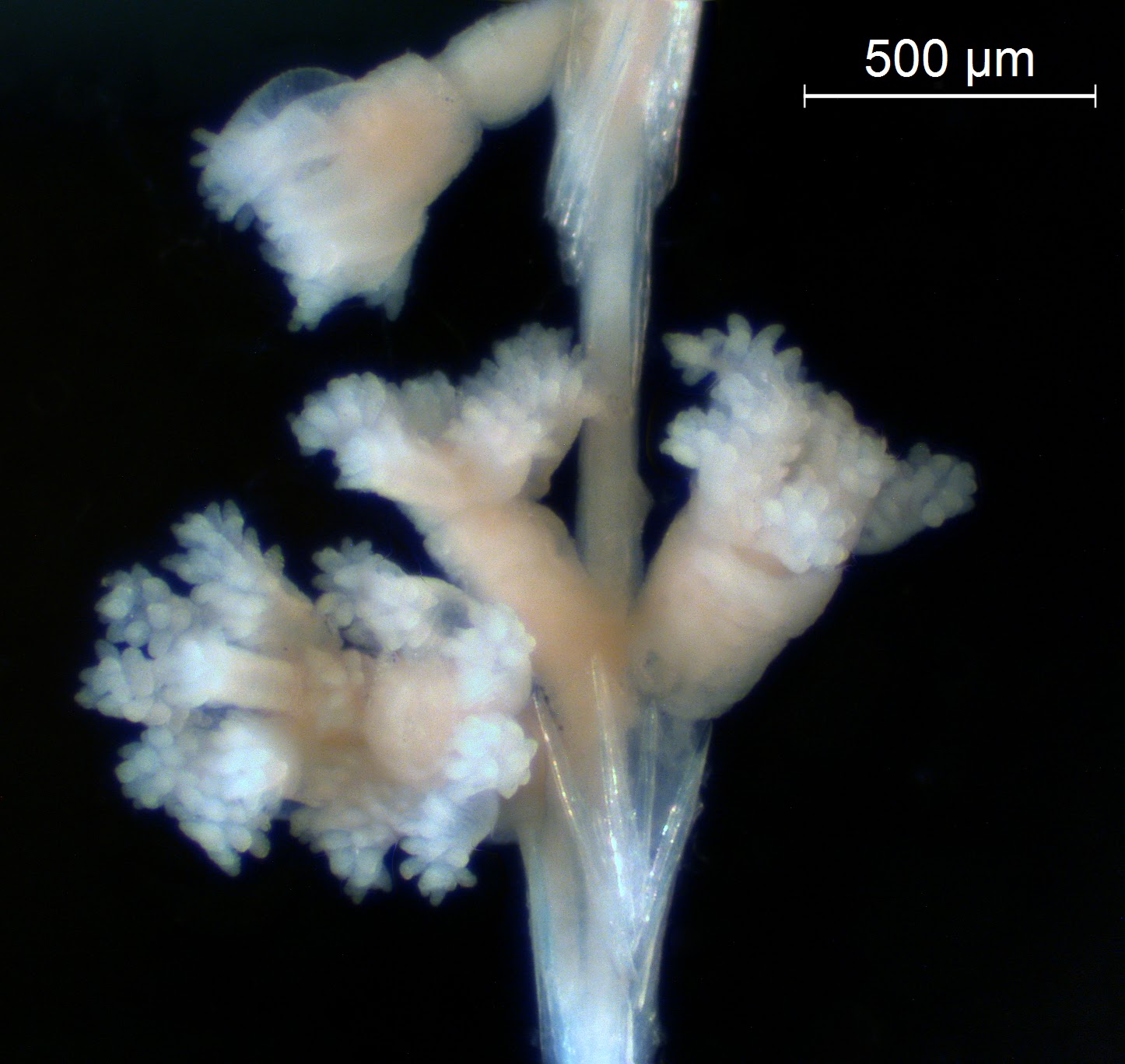This month’s critter looks a lot like an old fashioned-feather quill pen, and is fittingly named Stylatula elongata, the slender sea pen.
This critter of the month, Stylatula elongata, is often found in groups. Photo courtesy of Chris Grossman, www.diver.net
Many heads are better than one
A sea pen is not one single animal, but a colony of many tiny animals called polyps. Each colony contains several types of polyps which contribute to its survival in different ways. The feeding polyps, called autozooids, wave their tentacles in the water column to catch drifting plankton. Siphonozooids, a different kind of polyp, are responsible for distributing food throughout the colony using a complicated water circulation system.
Glow with the flow
Although sea pens may appear to be inanimate plant-like organisms yielding to the will of the water currents, they actually have a surprising number of defensive tricks up their sleeves. If disturbed, the polyps can take in water, inflating the colony so it can drift to a new location. They can also quickly expel water, deflating the colony and allowing it to retreat into the mud.
S. elongata autozooid polyps with tentacles extended.
In rod we trust
Like other sea pens, S. elongata is supported by a hard white skeletal rod made of calcium that looks like a lollipop stick. At the base of the rod is a muscular, bulbous holdfast called the basal peduncle that anchors it in the soft sediment. LEFT: Part of S. elongata with the supporting skeletal rod exposed. RIGHT: Close-up of polyp clusters with needle-like spokes called sclerites
Arranged in spirals around the rod are clusters of polyps which create the sea pens’ feather-like appearance. S. elongata can be distinguished from other species of sea pens by the exposed fans of needle-like spikes called sclerites which protect the soft, fleshy polyps from its two main predators, nudibranchs (sea slugs) and sea stars.
Sea pen on the decline?
A muscular, bulbous holdfast called the basal peduncle anchors S. elongata in the soft sediment in which it lives.
Critter of the Month
Our benthic taxonomists, Dany and Angela, share their discoveries by bringing us a Benthic Critter of the Month. Dany and Angela are scientists who work for the Marine Sediment Monitoring Program. These posts will give you a peek into the life of Puget Sound’s least-known inhabitants.
In each issue we will highlight one of the Sound’s many fascinating invertebrates. We’ll share details on identification, habitat, life history, and the role this critter plays in the sediment community. Can't get enough benthos? See photos from our Eyes Under Puget Sound collection on Flickr.






